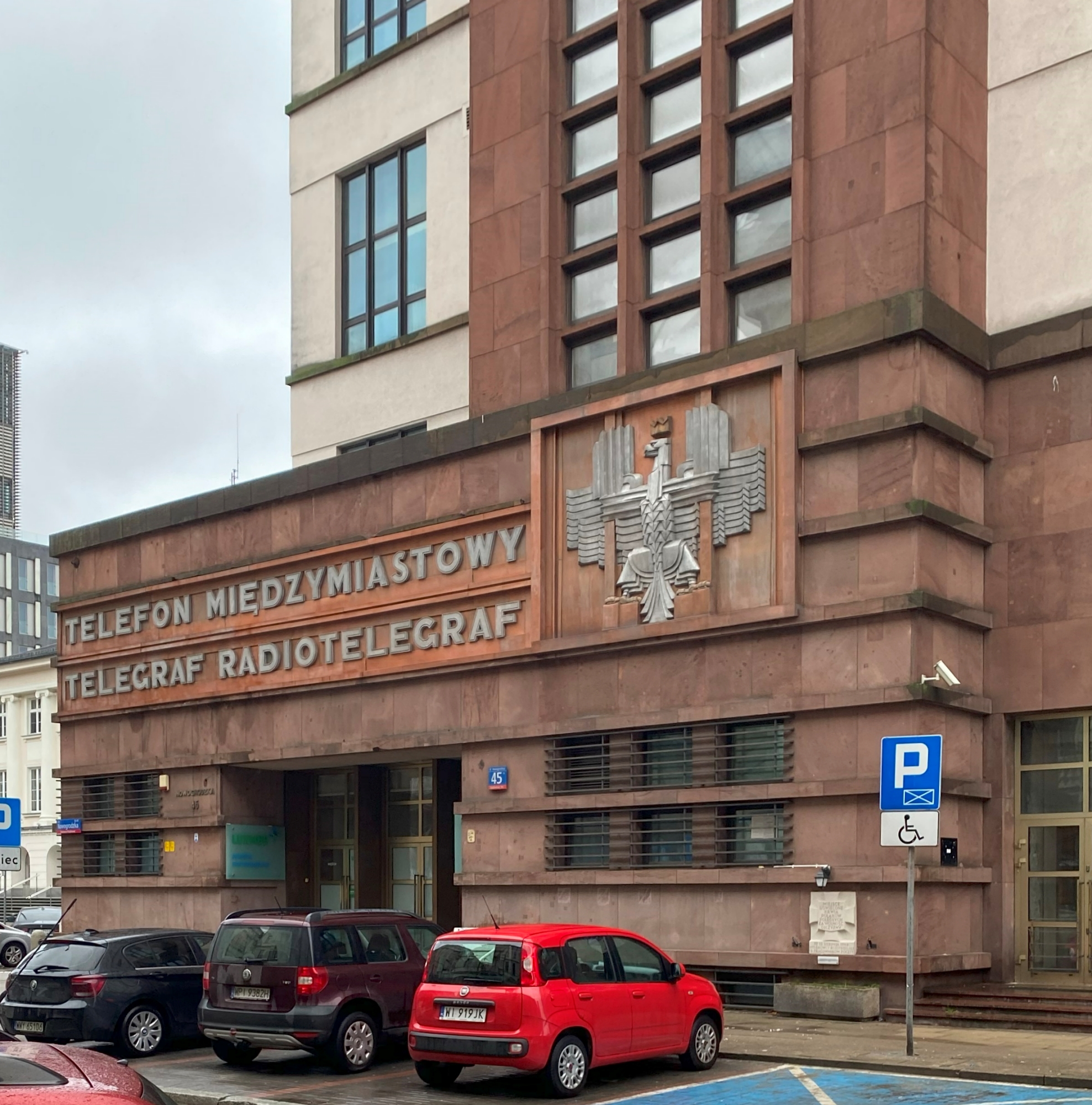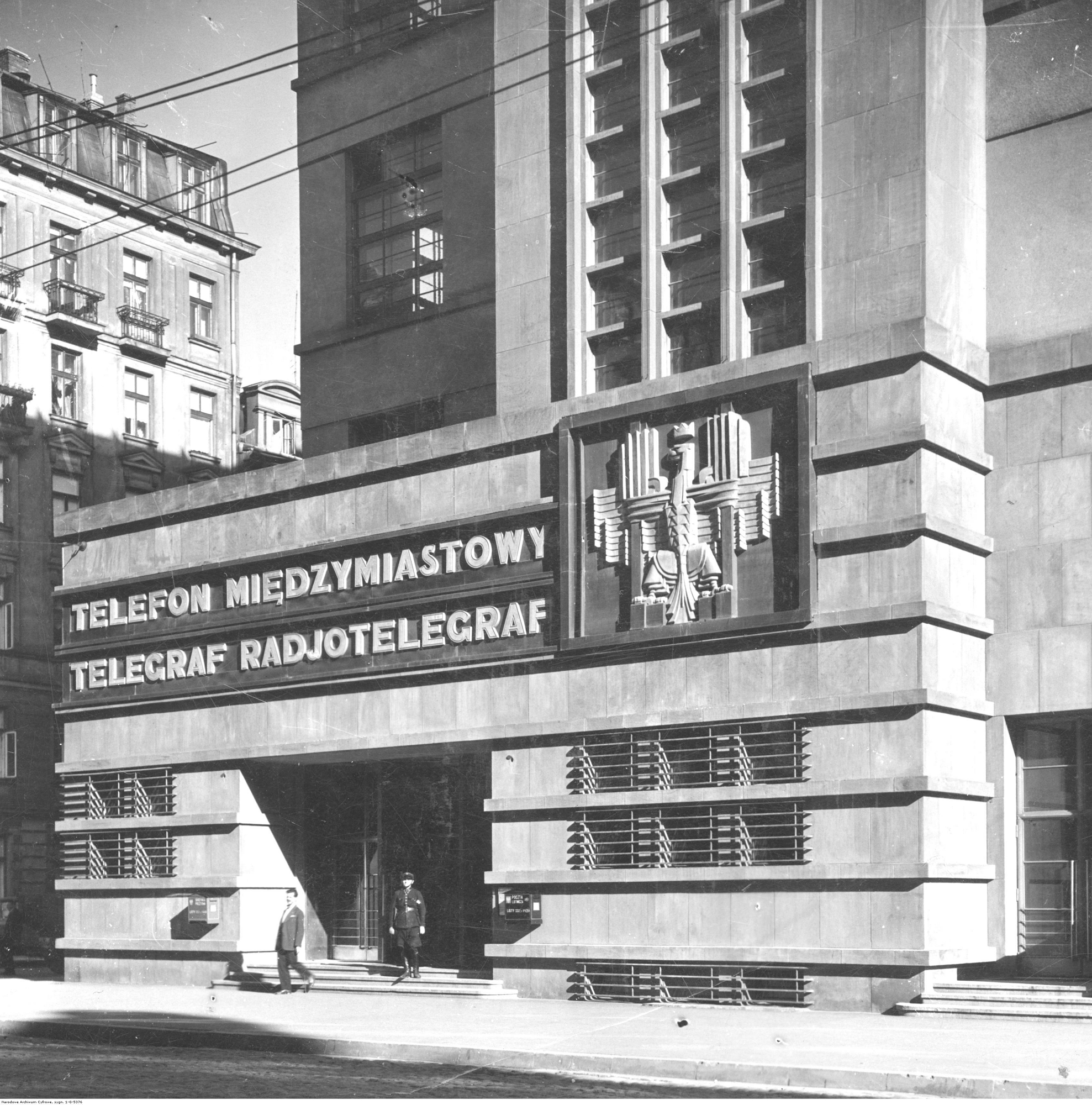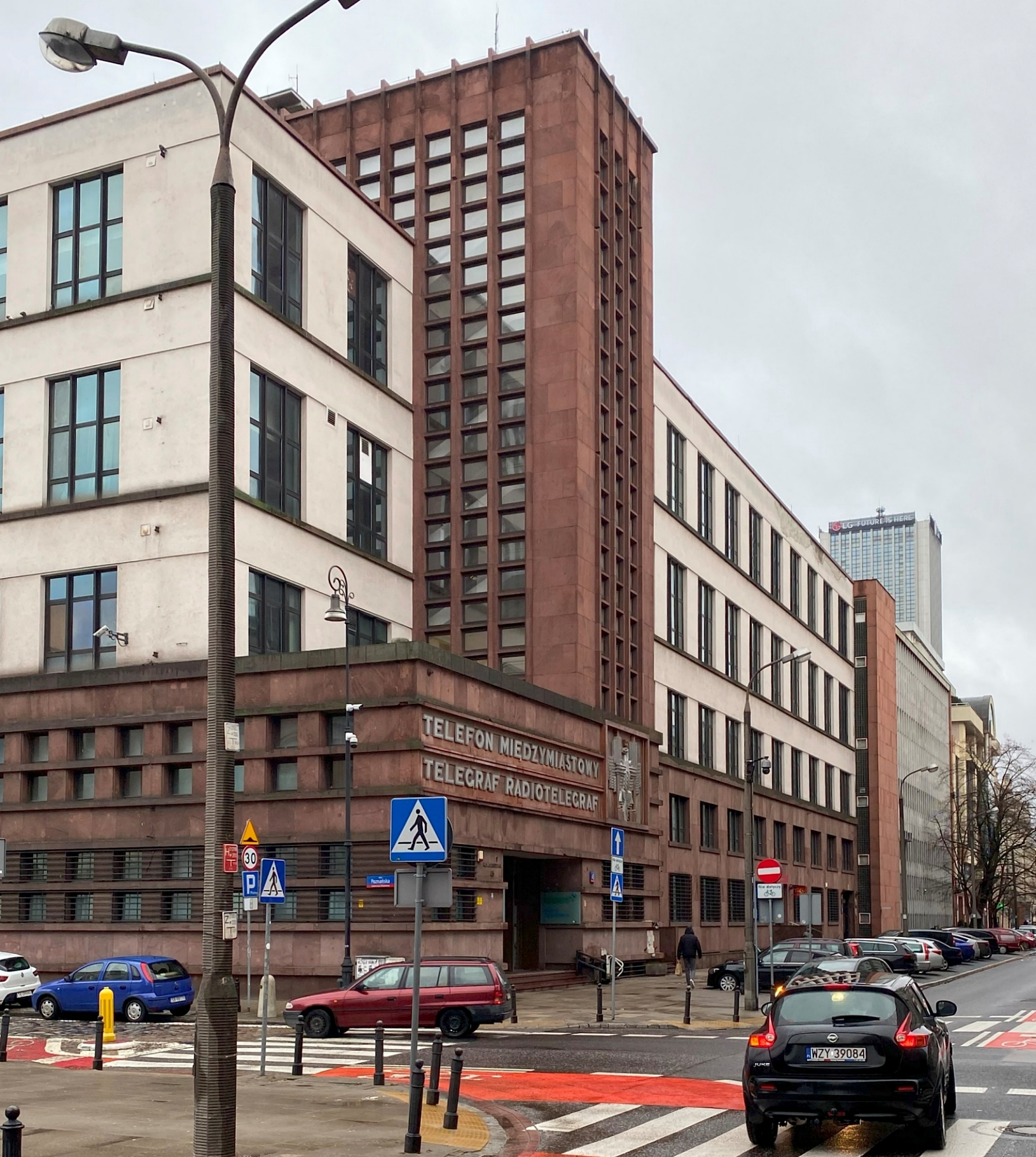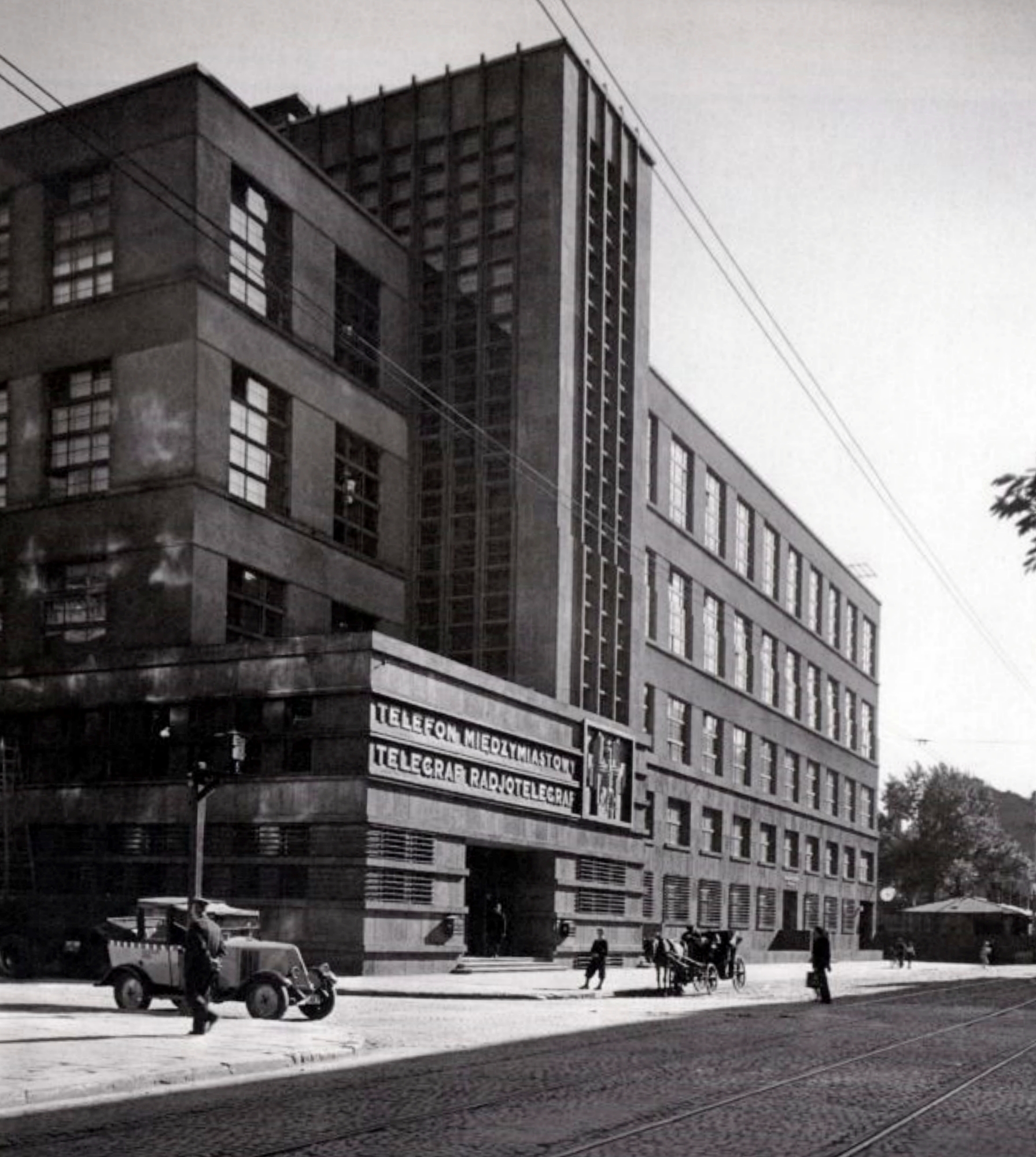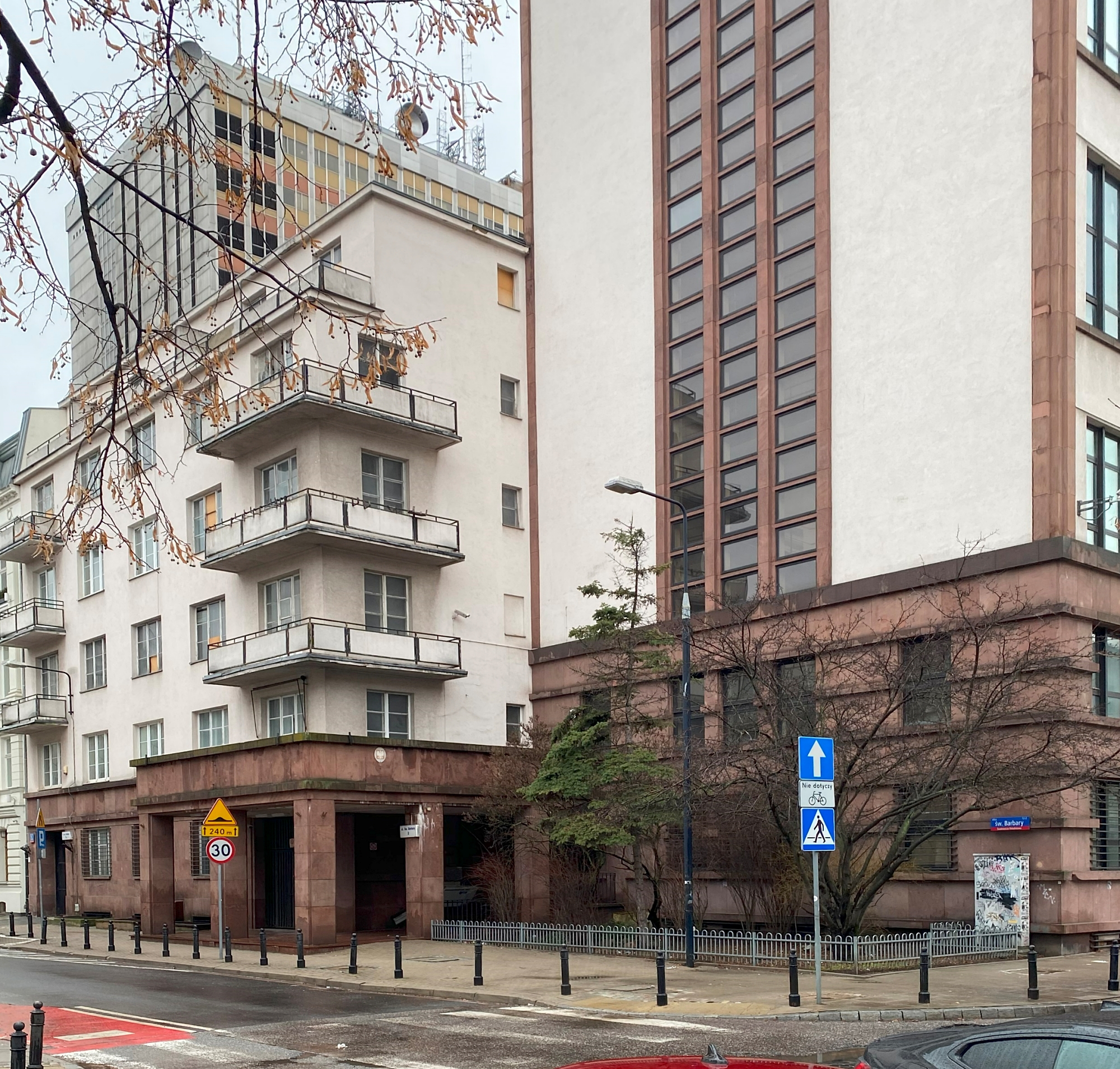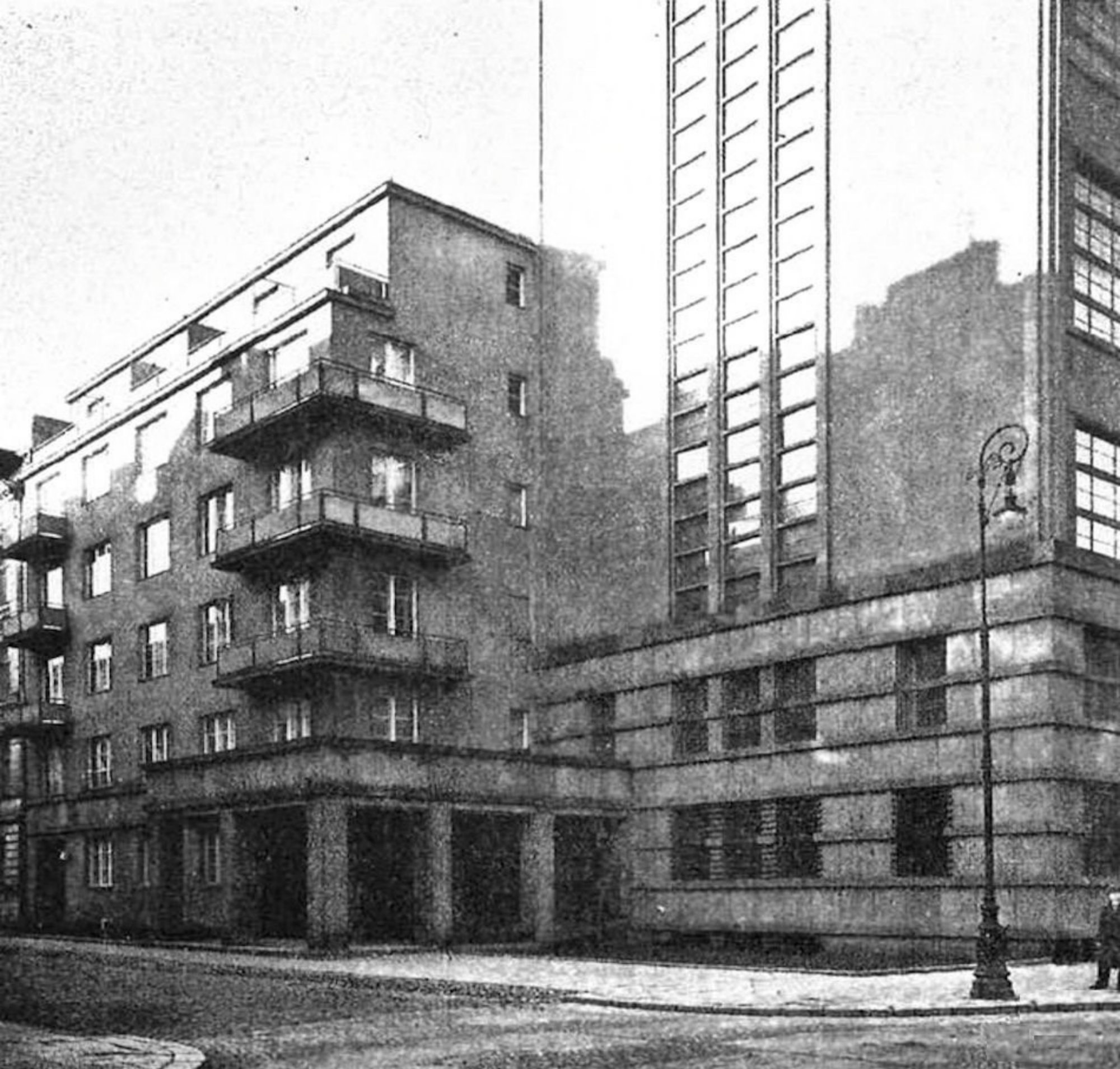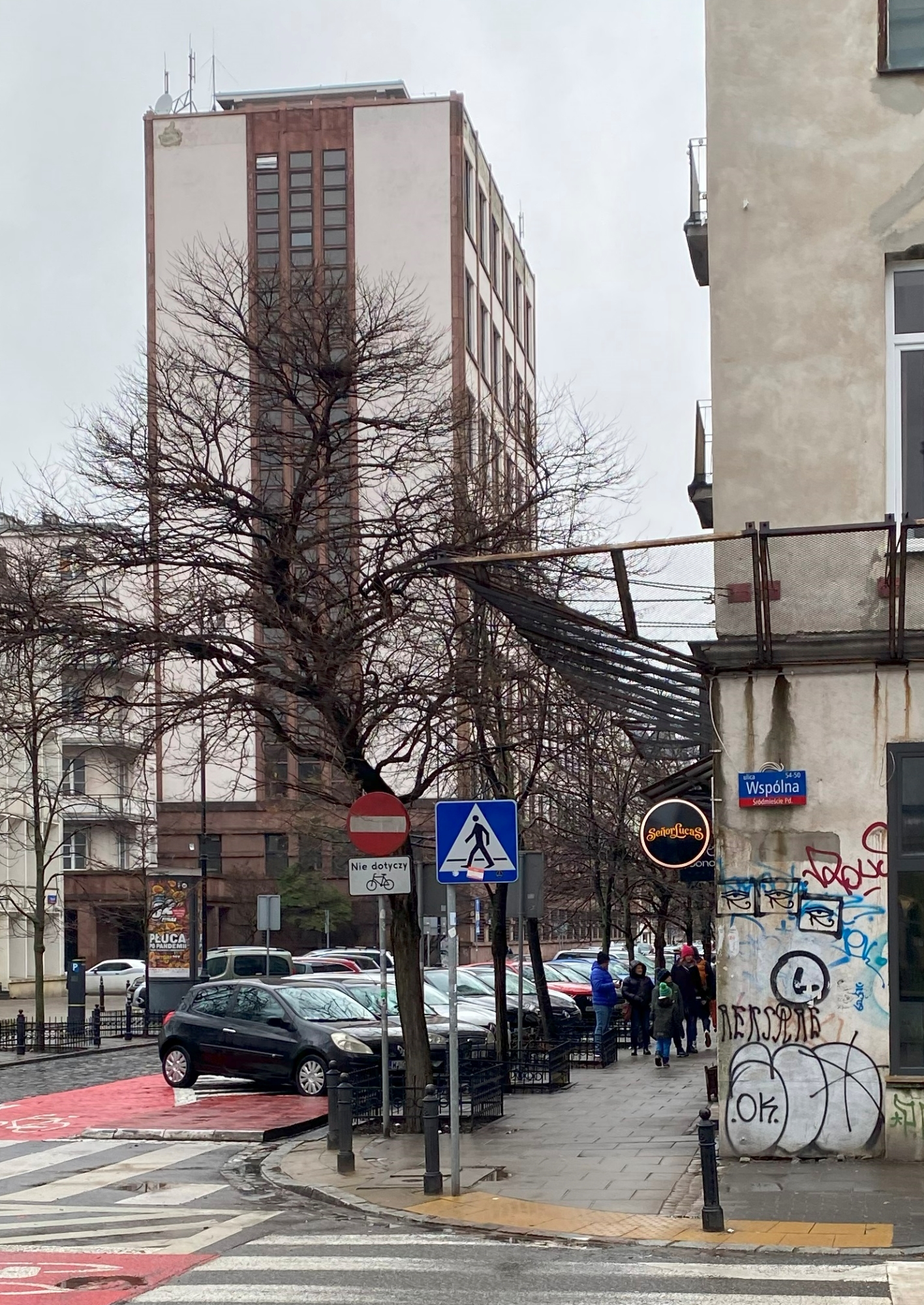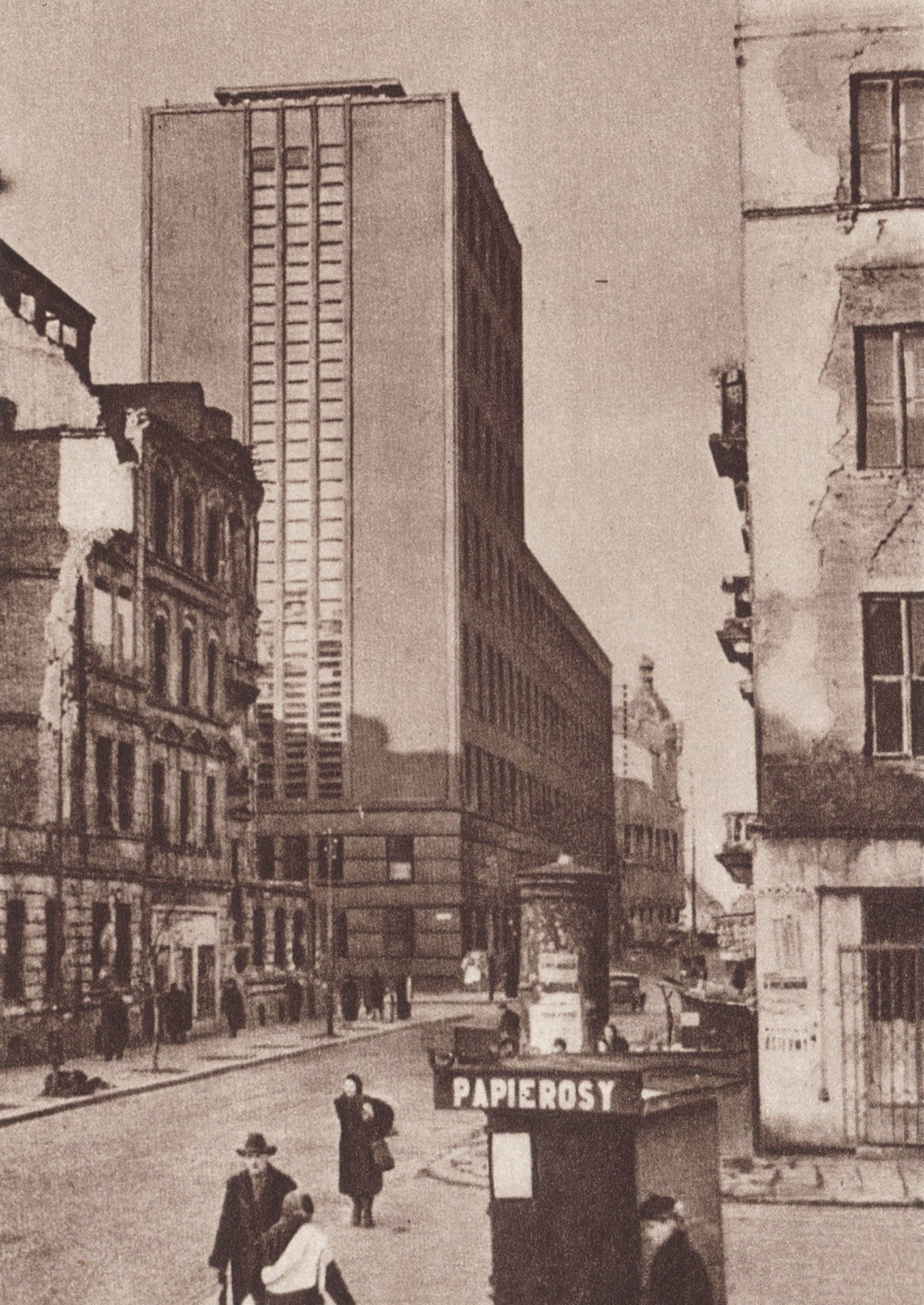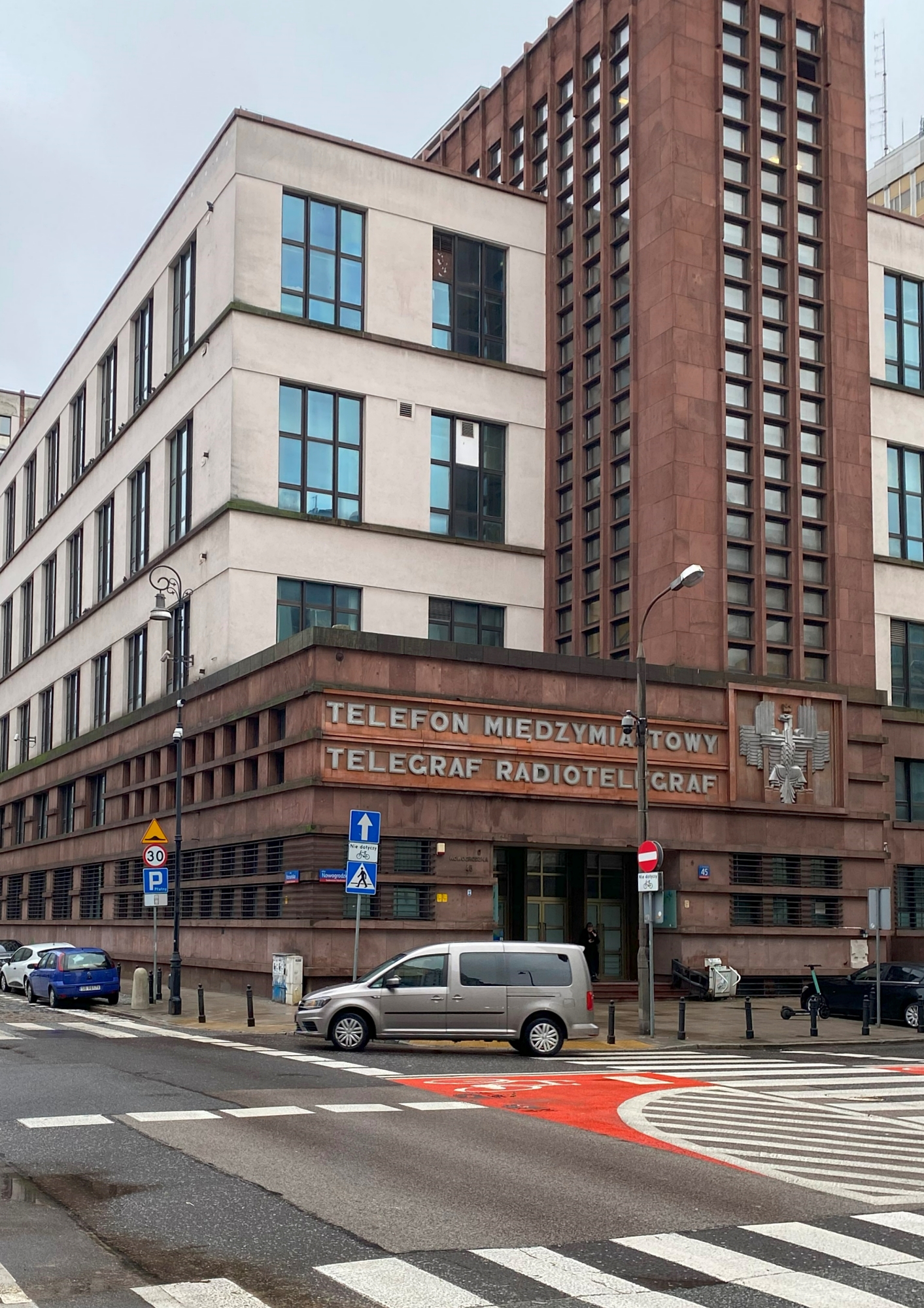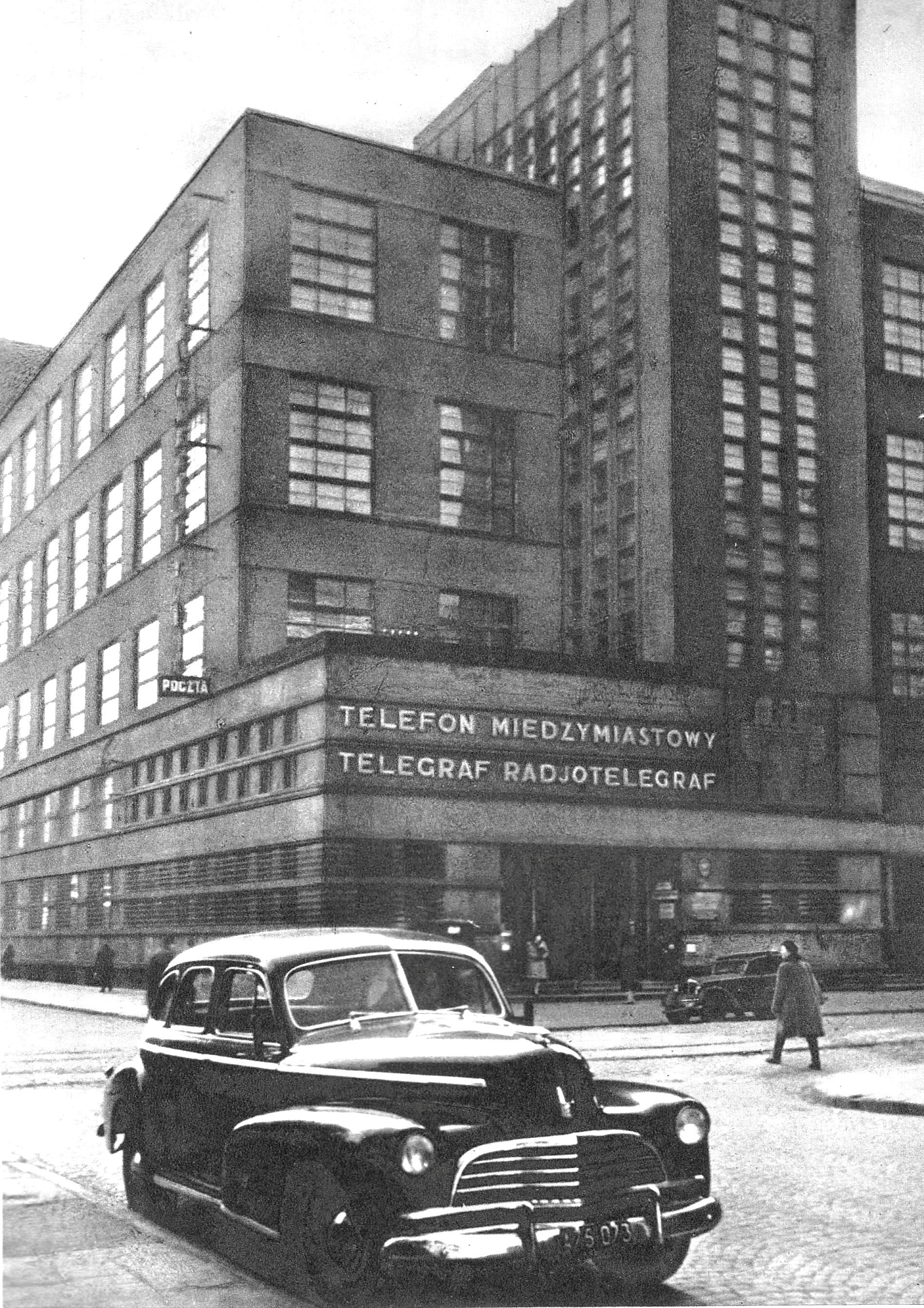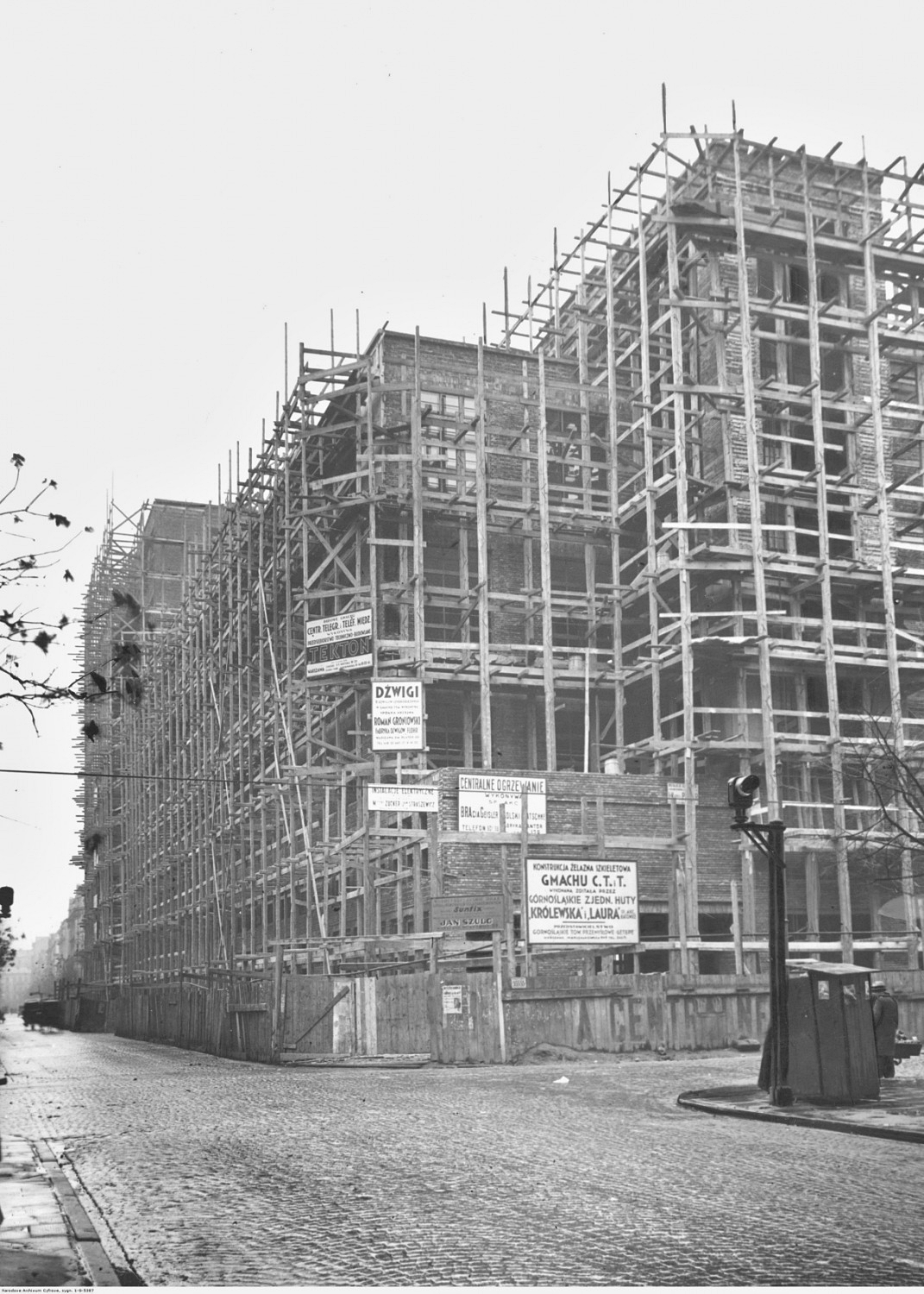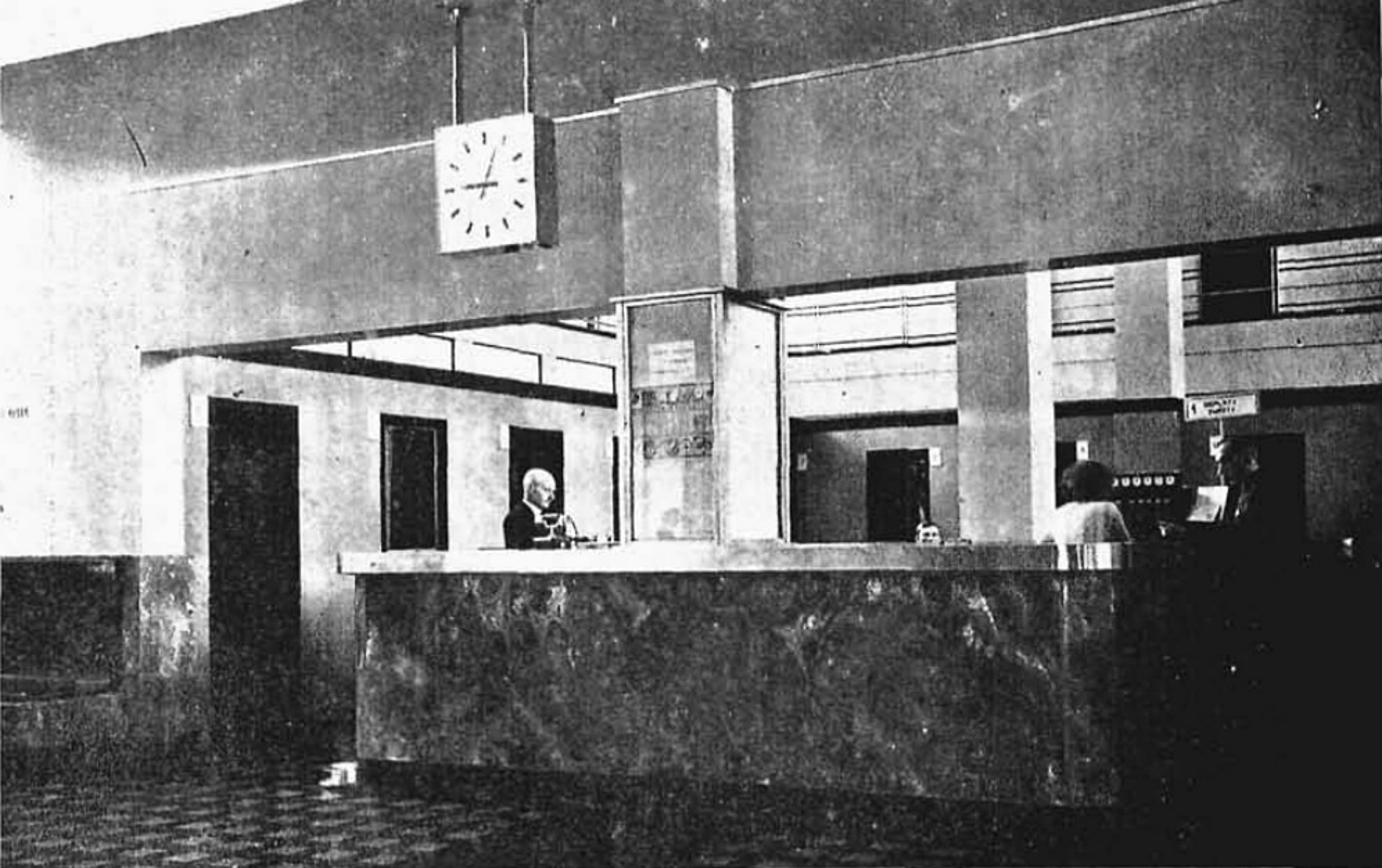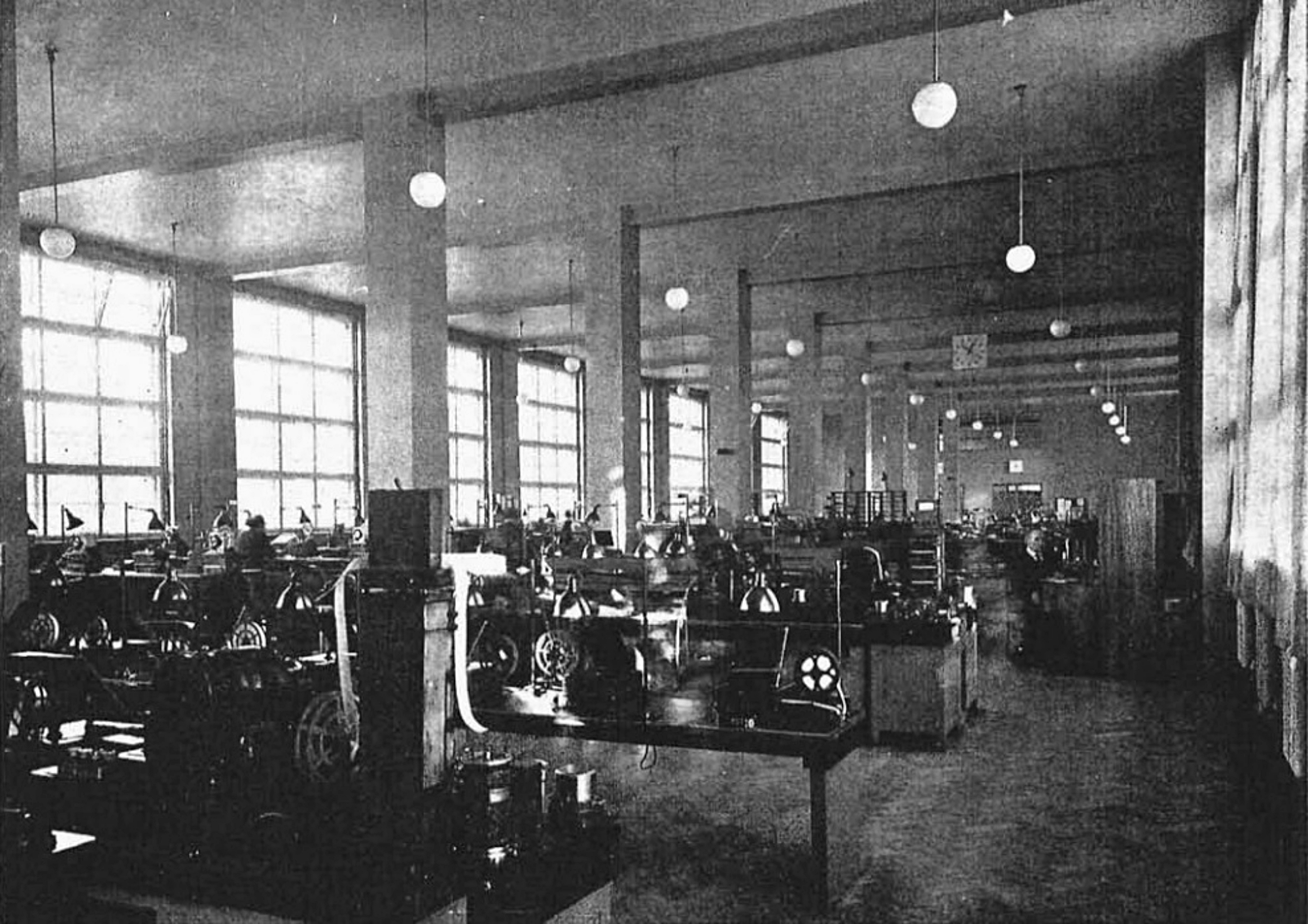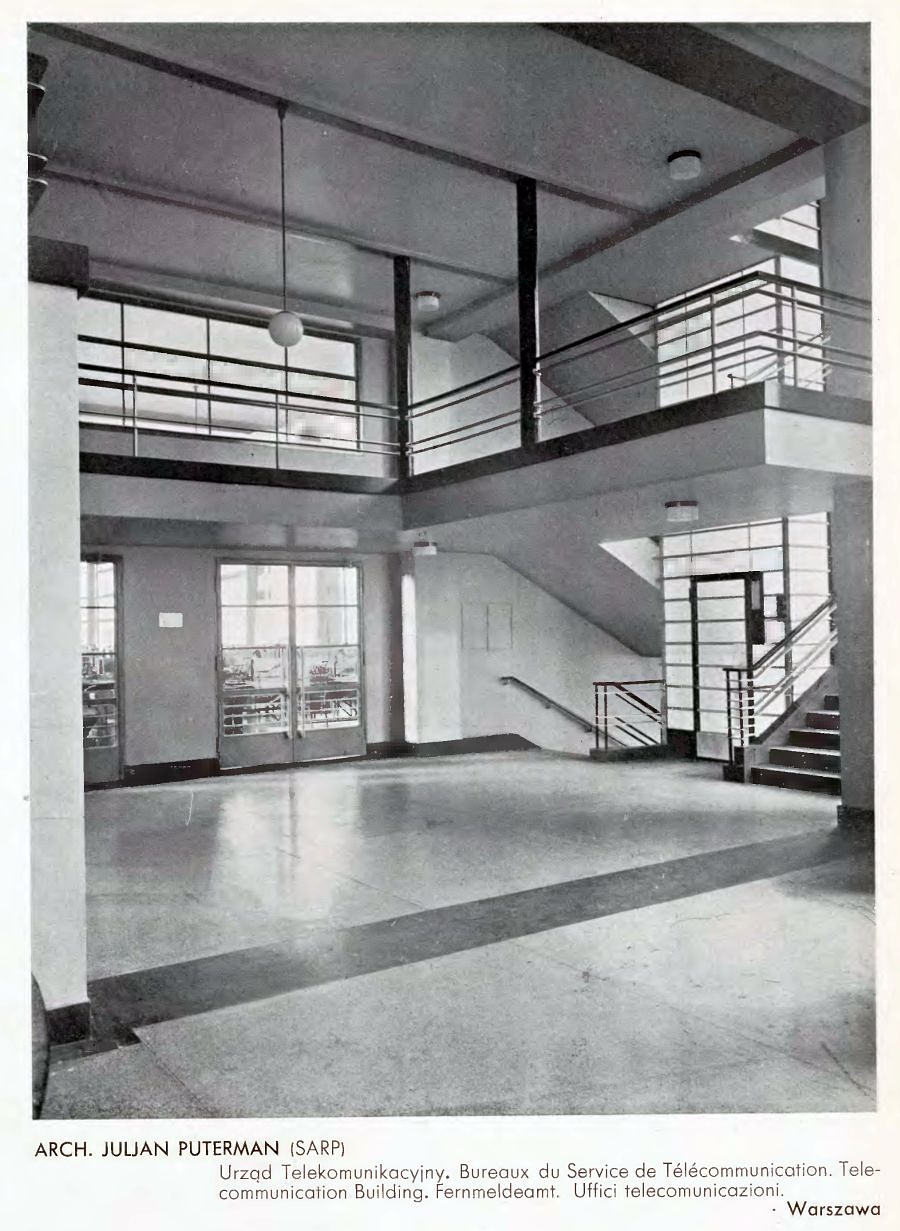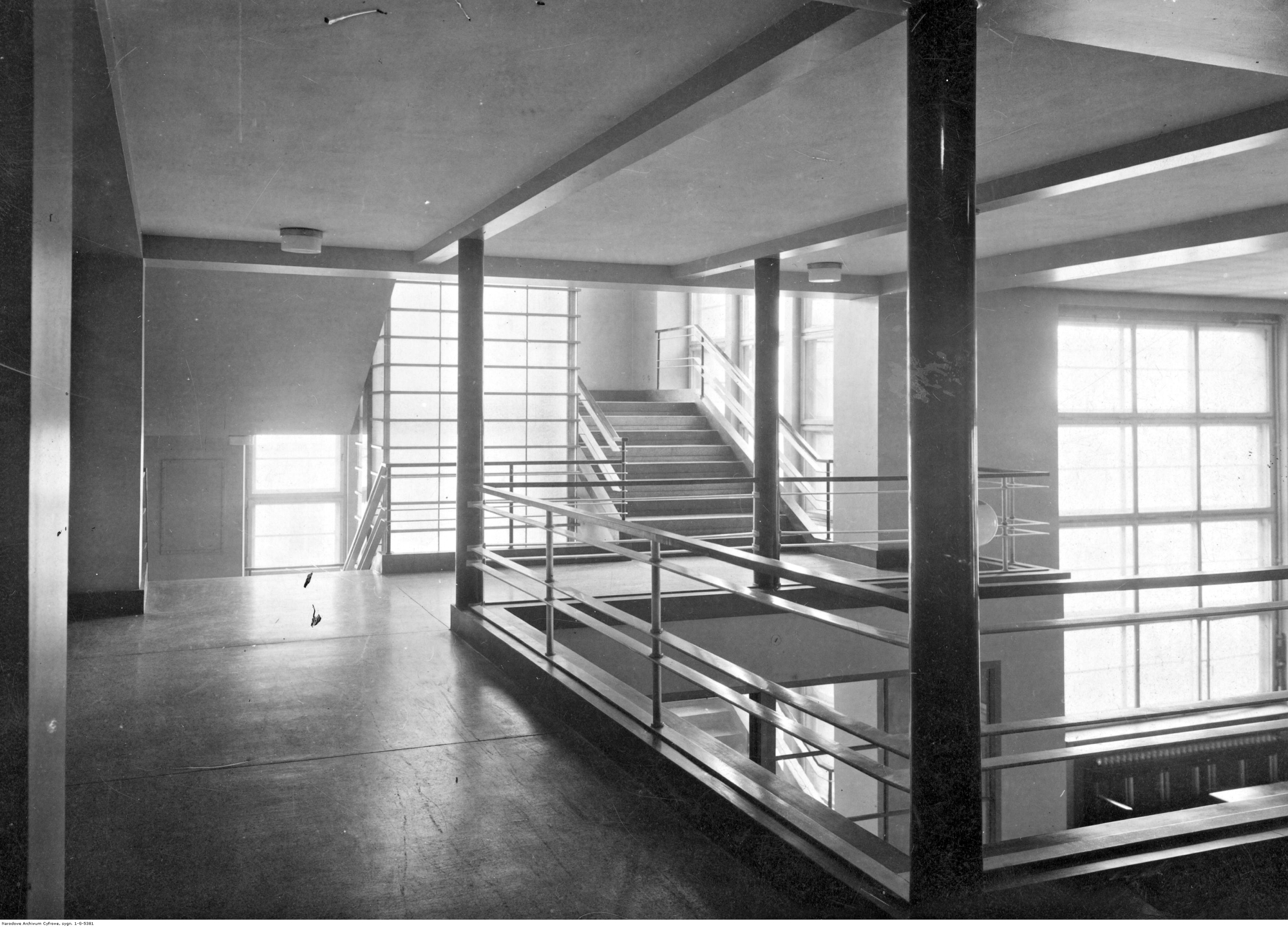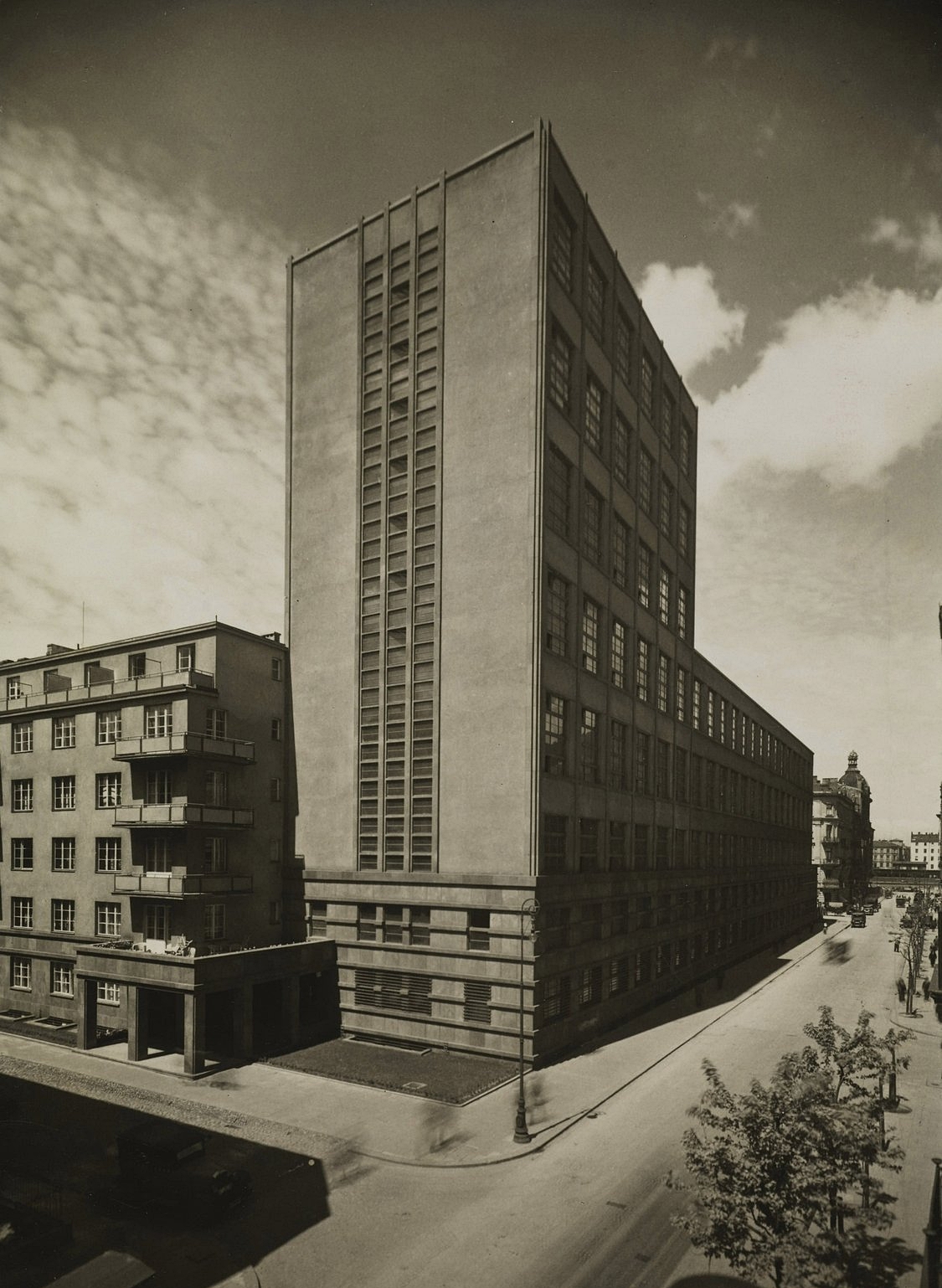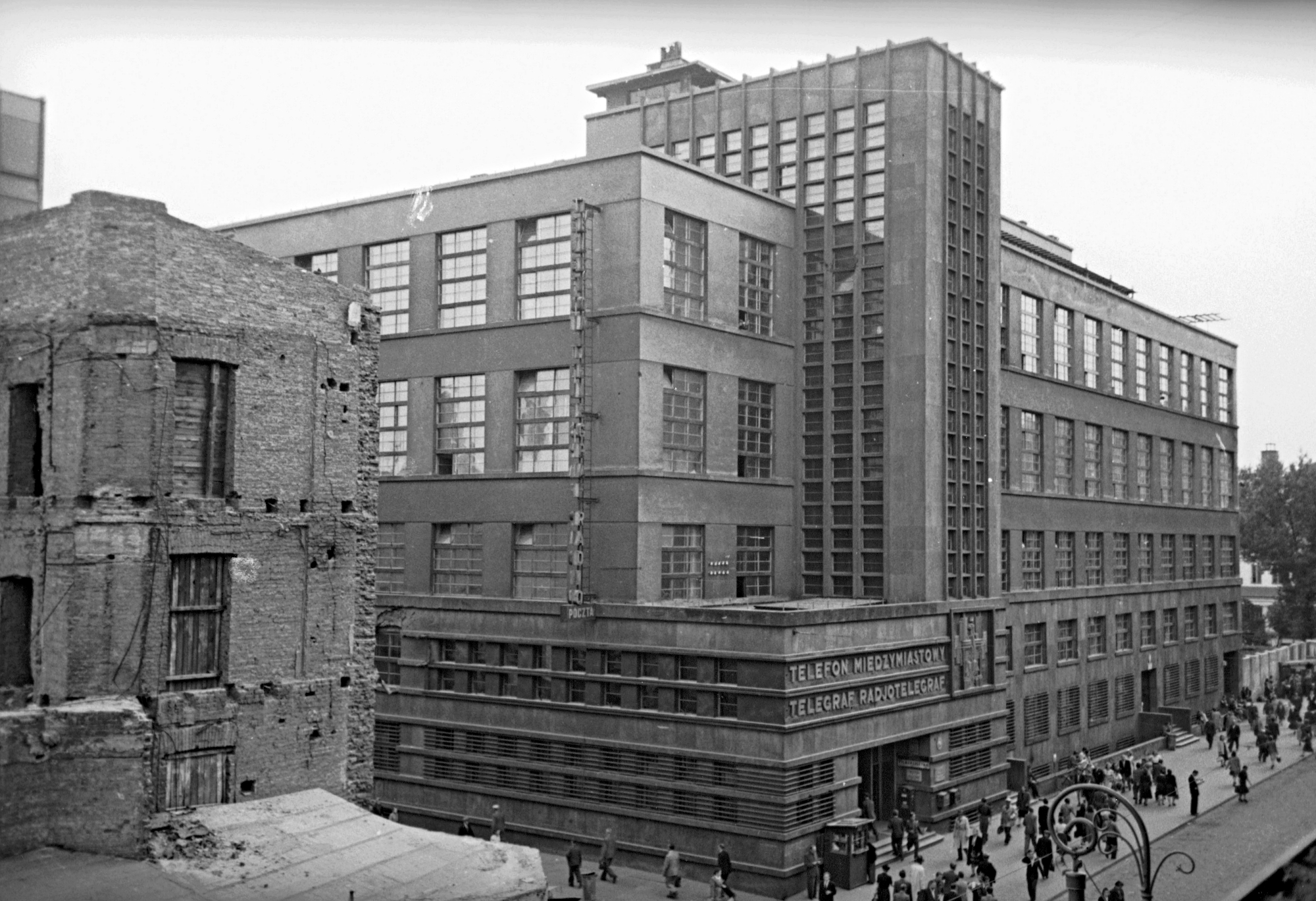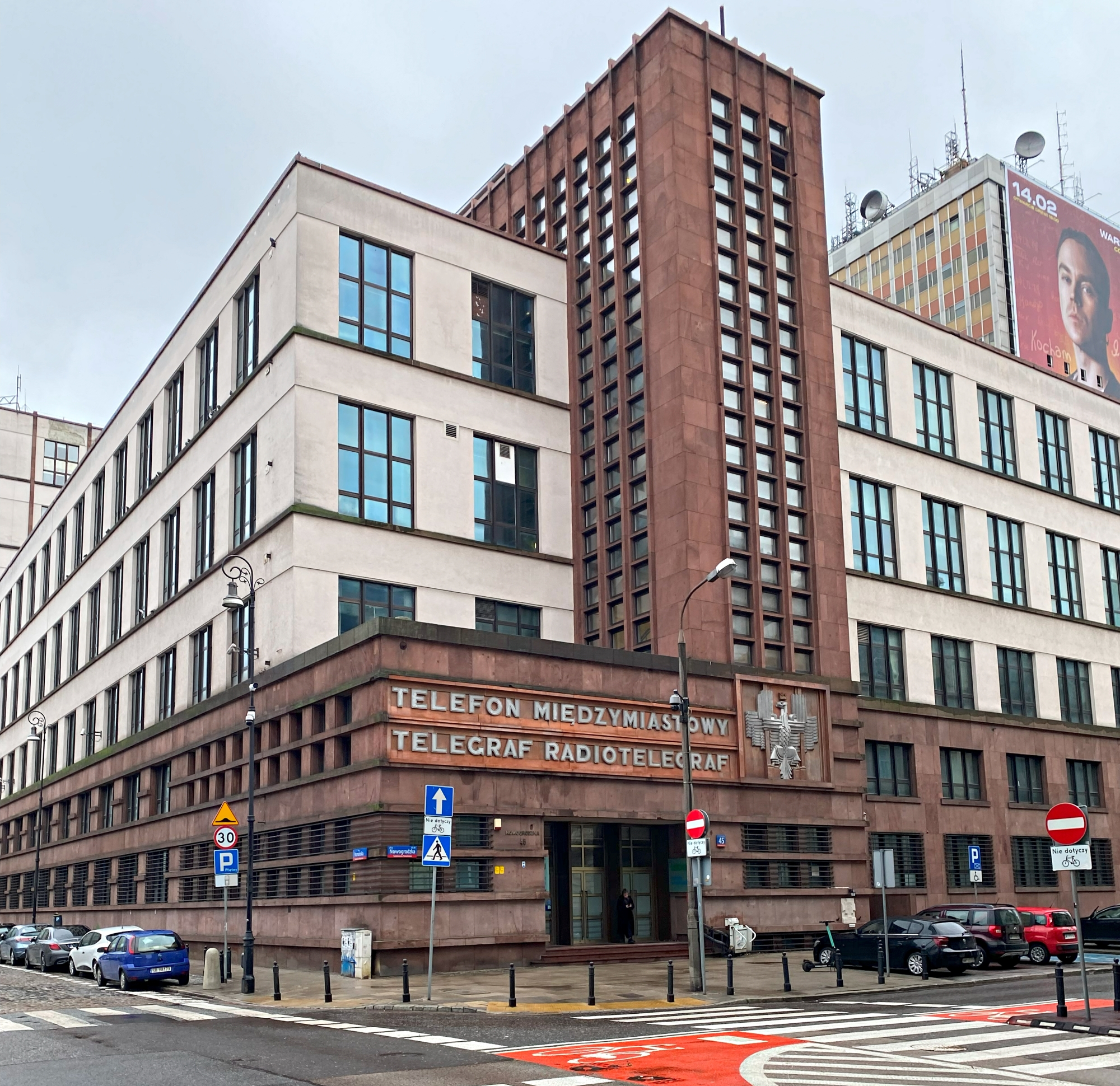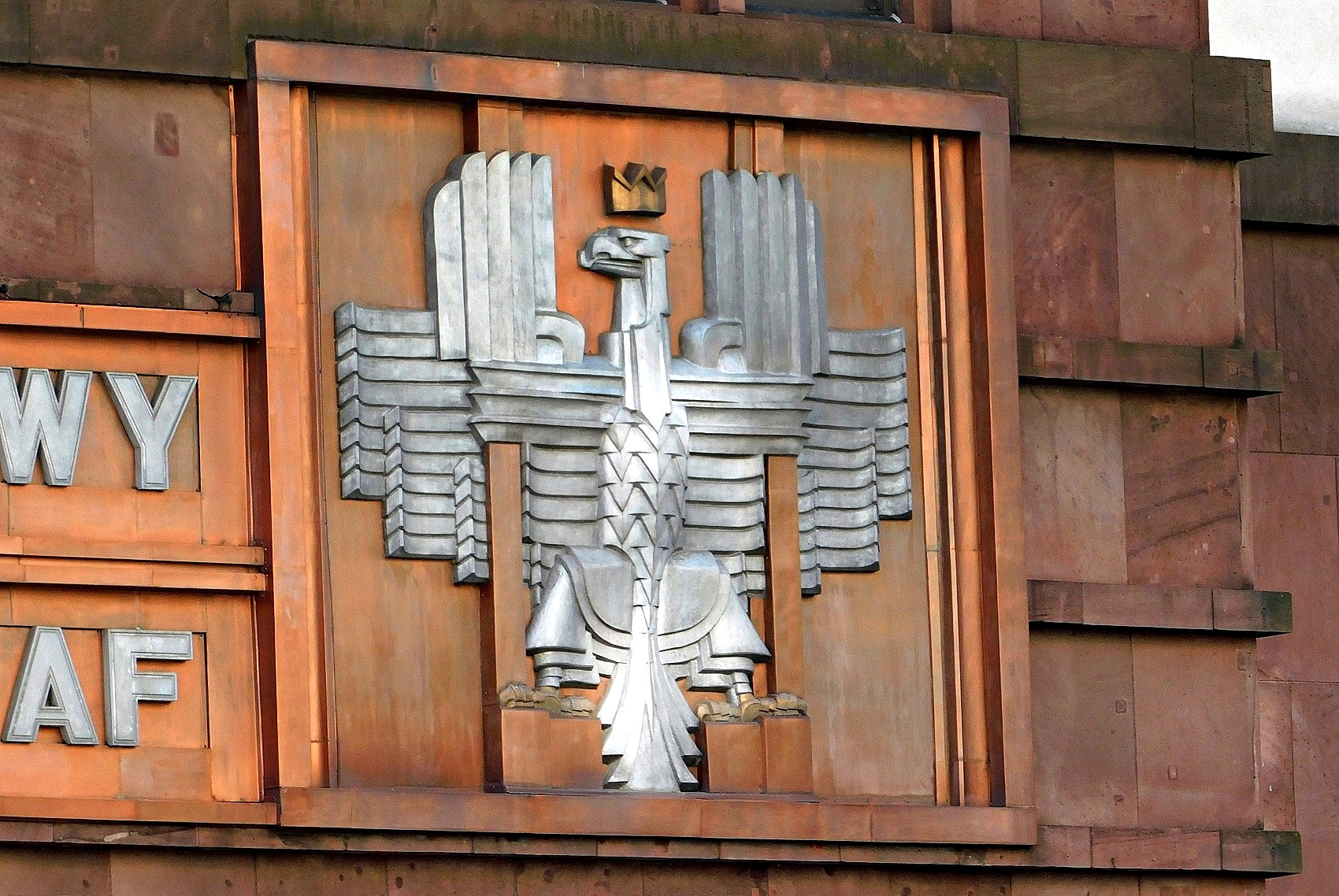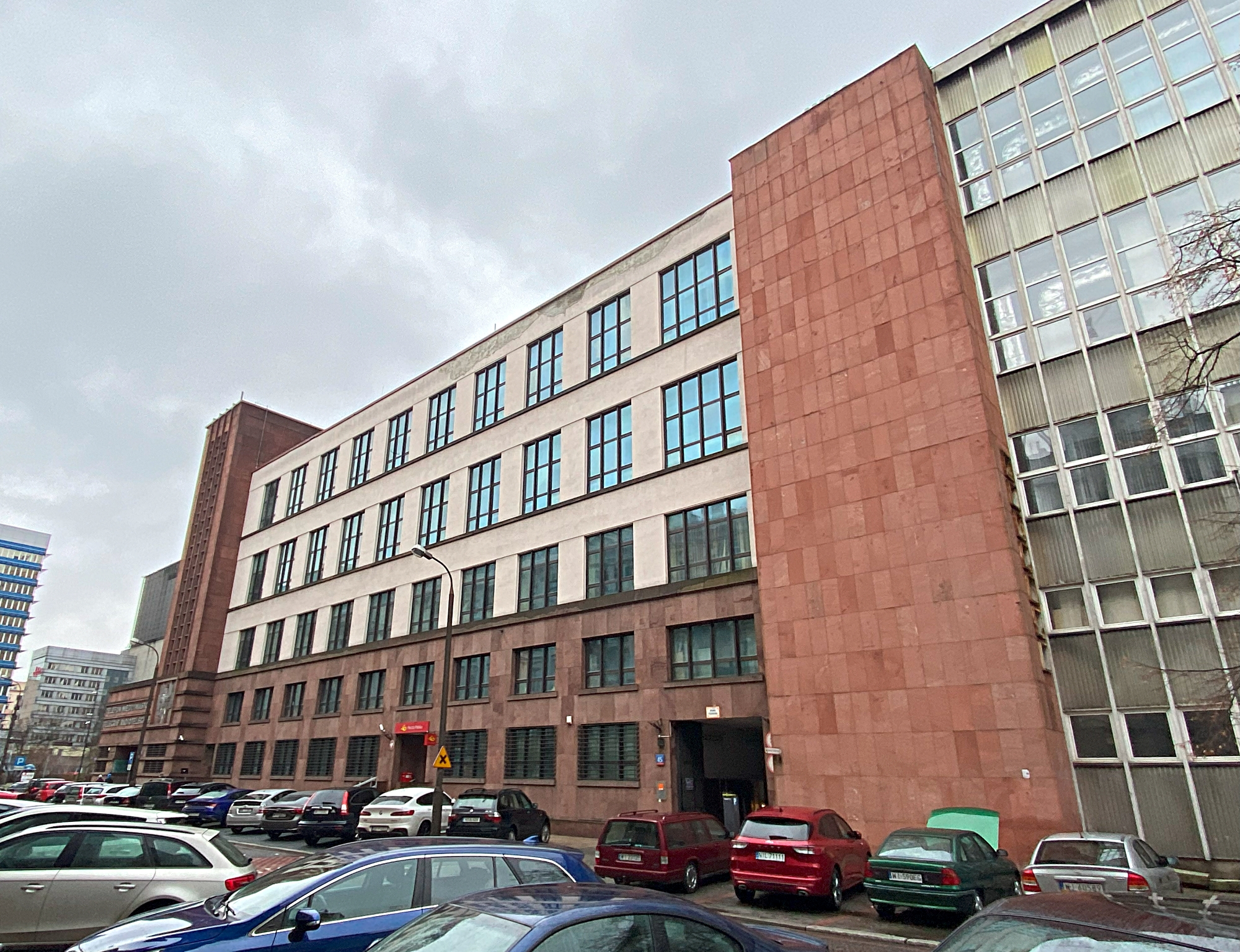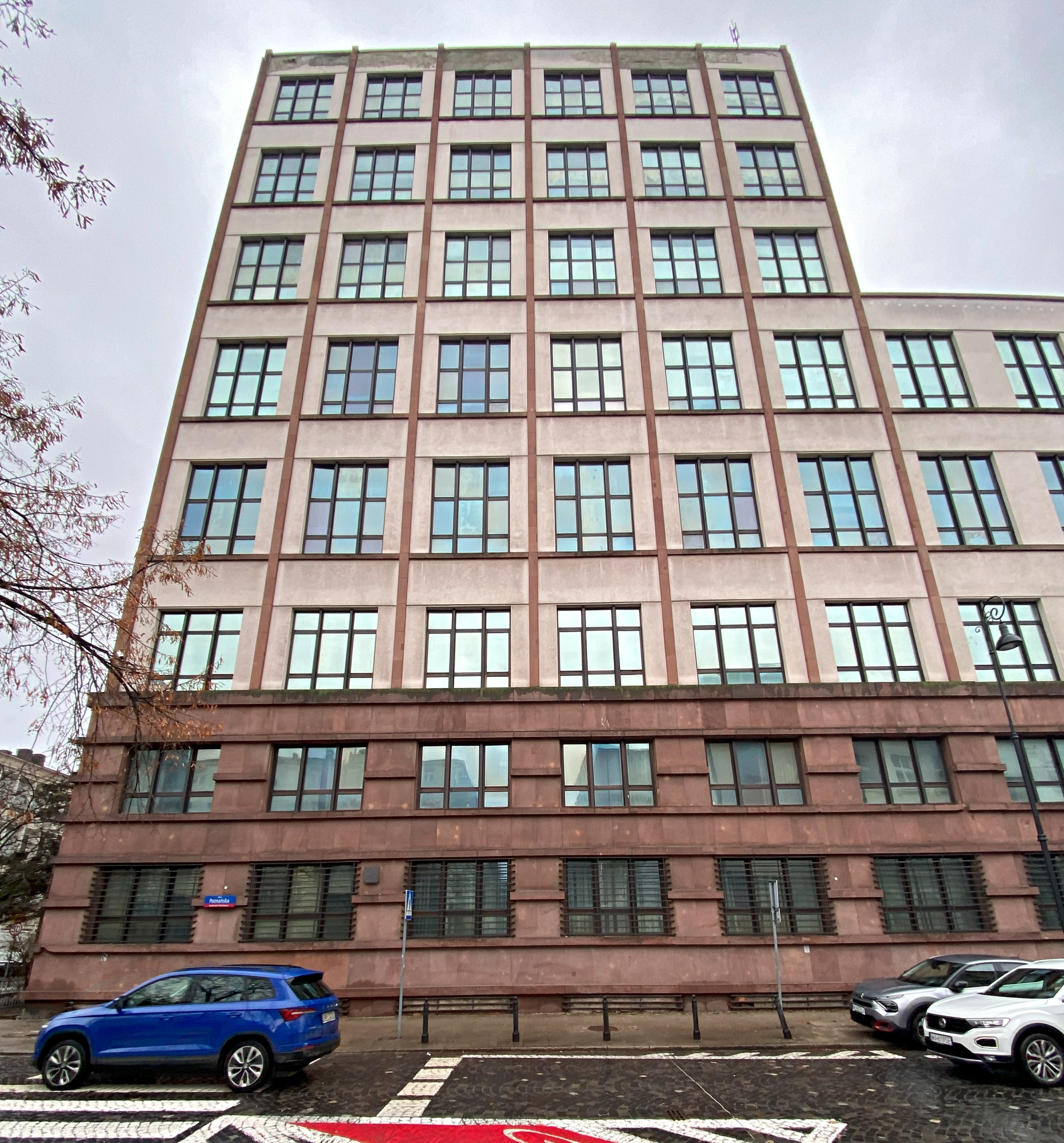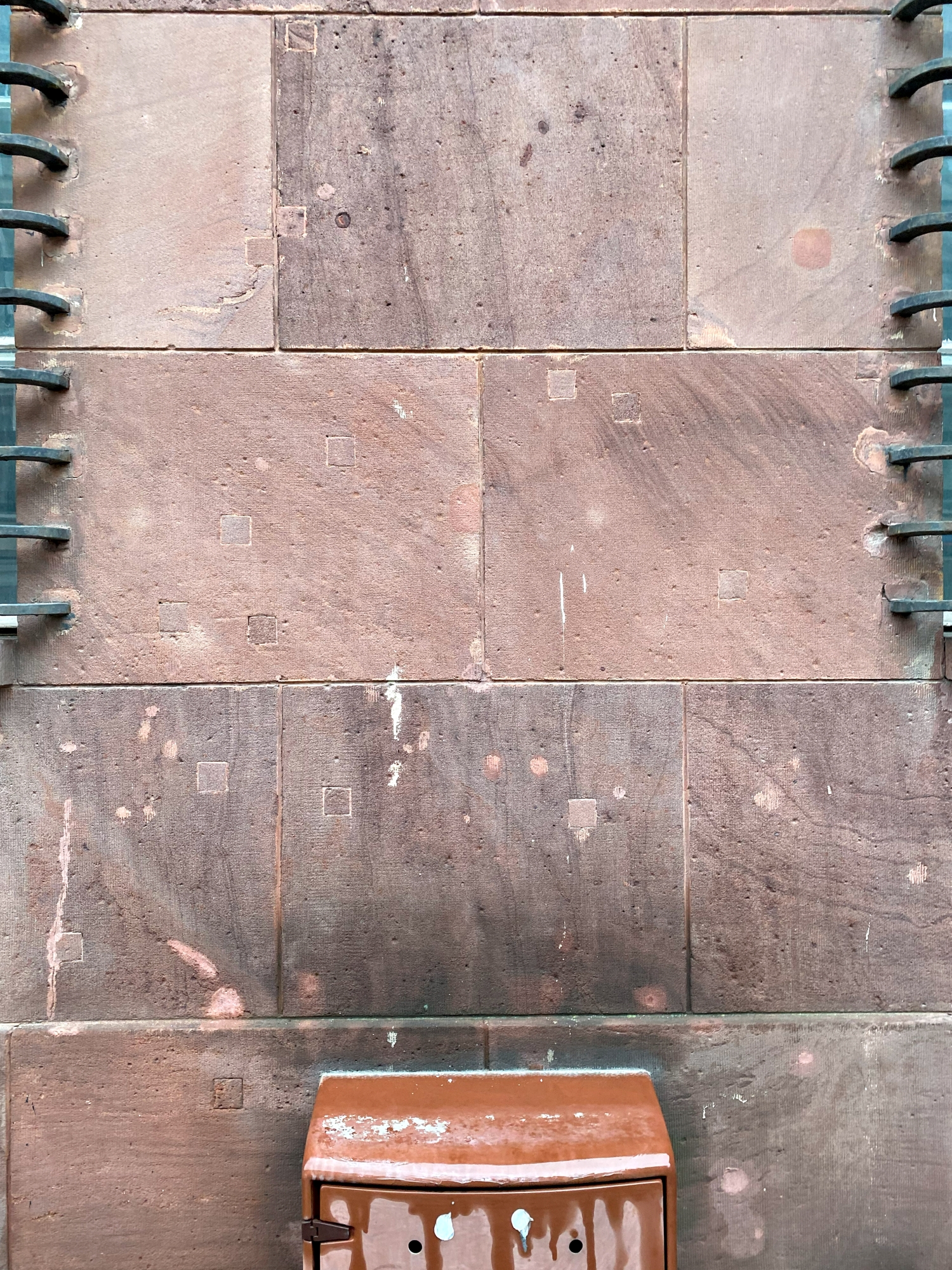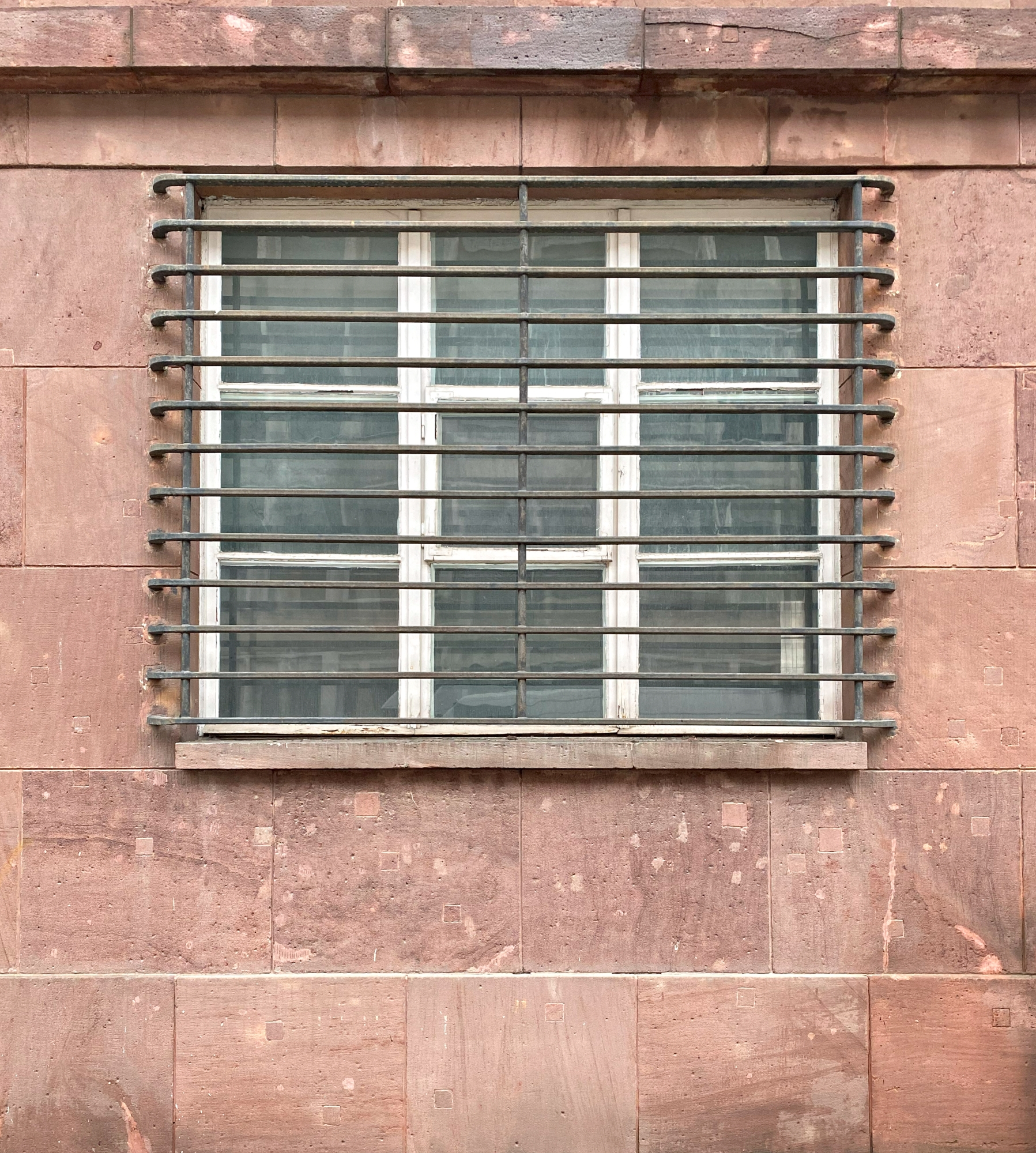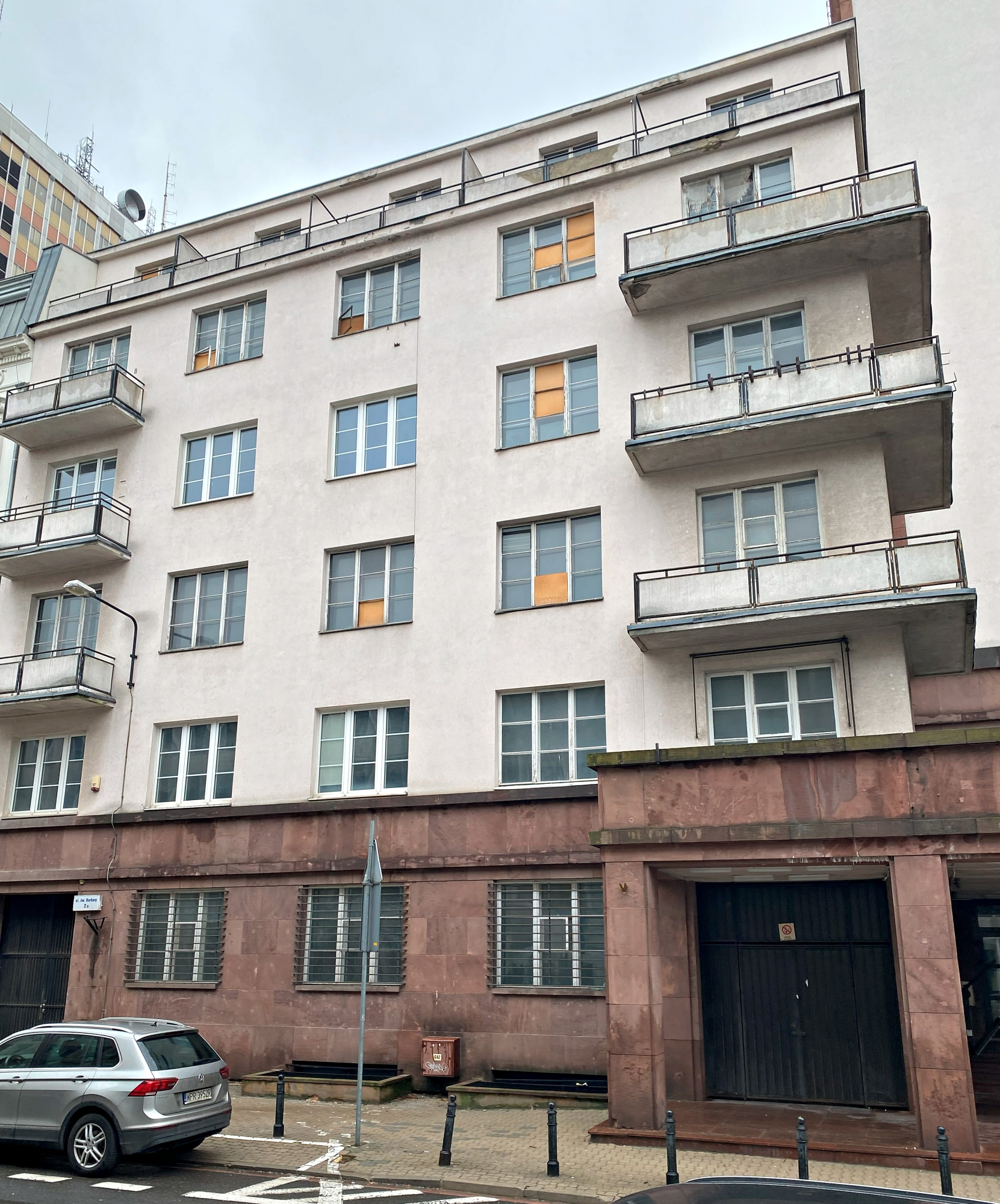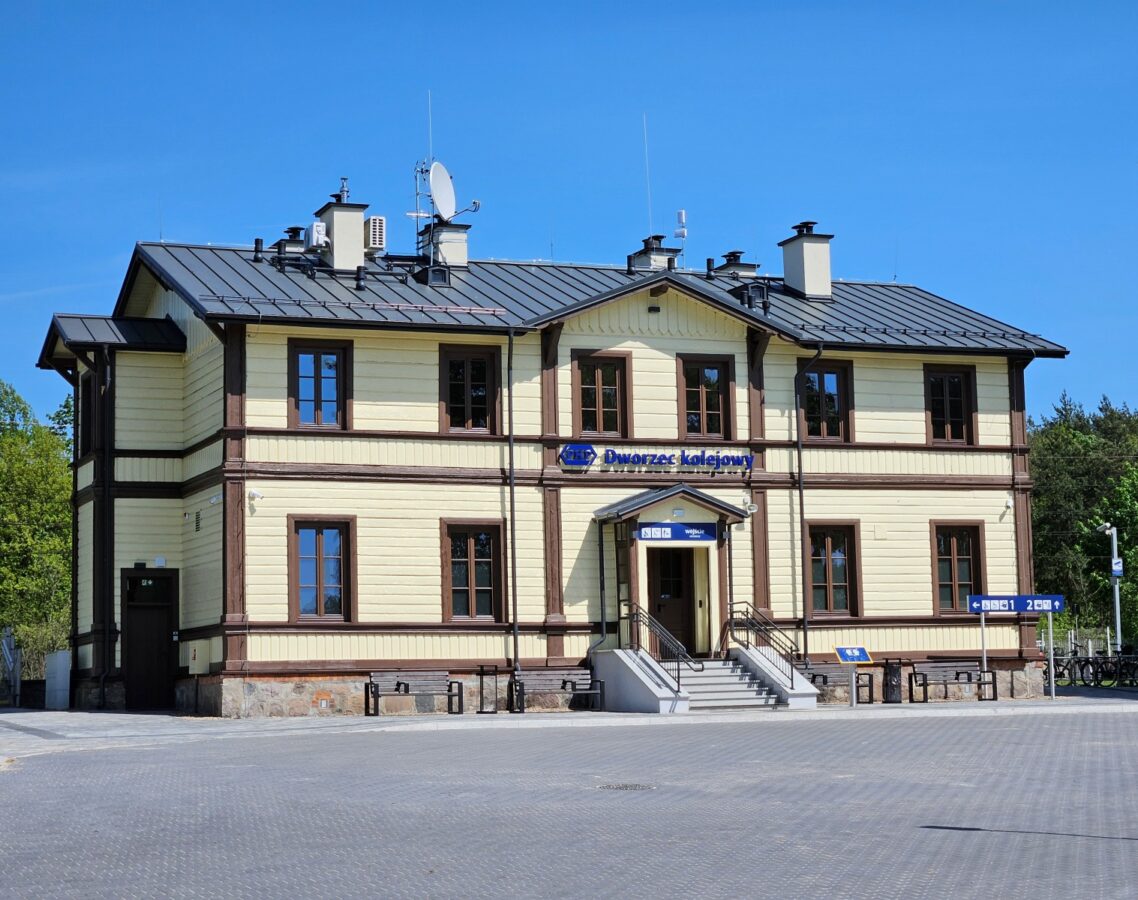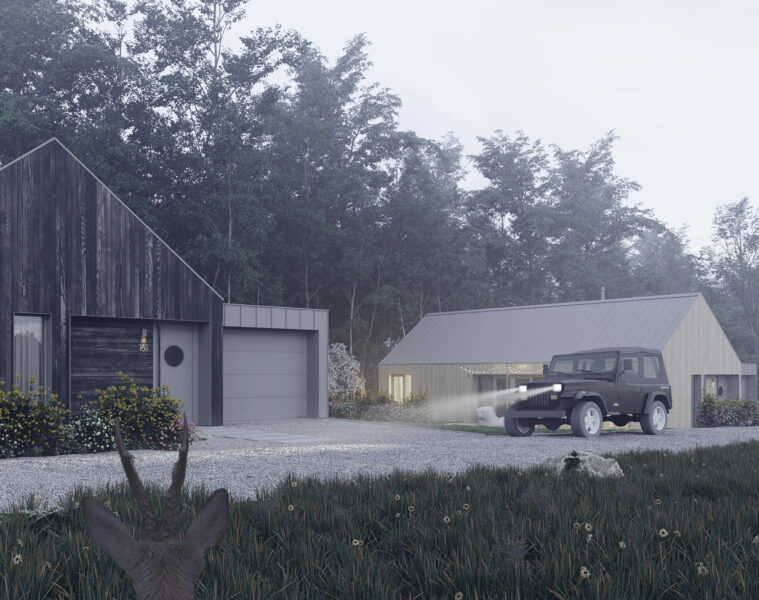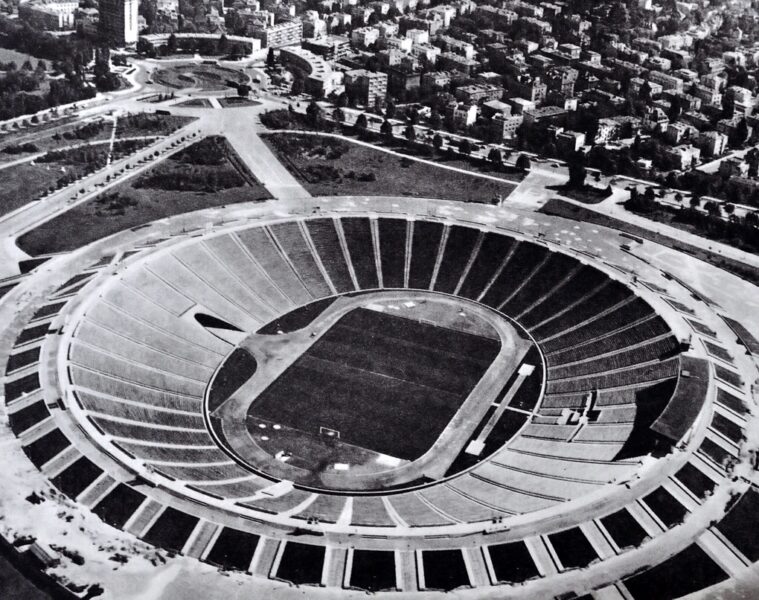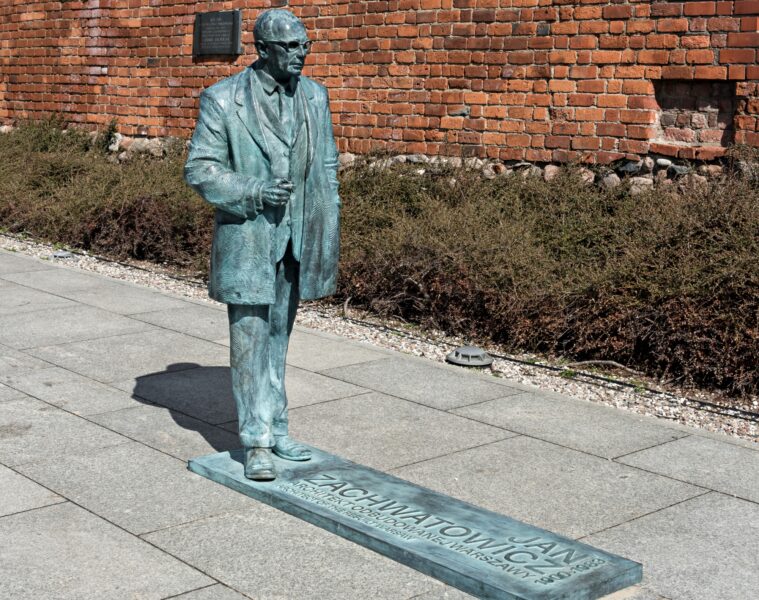At 45 Nowogrodzka Street is an impressive edifice – one of the most interesting examples of extreme functionalism in Warsaw. The characteristic building was constructed in the 20th interwar period for the Telecommunications Office. The need to build a facility equipped with modern technical equipment was dictated by the development of the telegraph and telephone network in the reborn Poland. The building was constructed between 1928 and 1934 and was the first steel-framed building in Poland.
The competition for the design of the Main Building of the State Telecommunications Office in Warsaw was announced in 1921. It was to include, among other things, a hall for 300 people and 40 clerks, an apparatus room and a waiting room for 30 people. In addition, the building was to include a branch of the post office with a separate entrance, offices and flats for the directors, as well as technical rooms, garages and workshops.
“Mock-up of the Telecommunications Office building, view from the junction of Nowogrodzka and Poznanska streets. 1930 r.” – the photo (scan) comes from the weekly Stolica no. 39 (2062) 27.09.1987
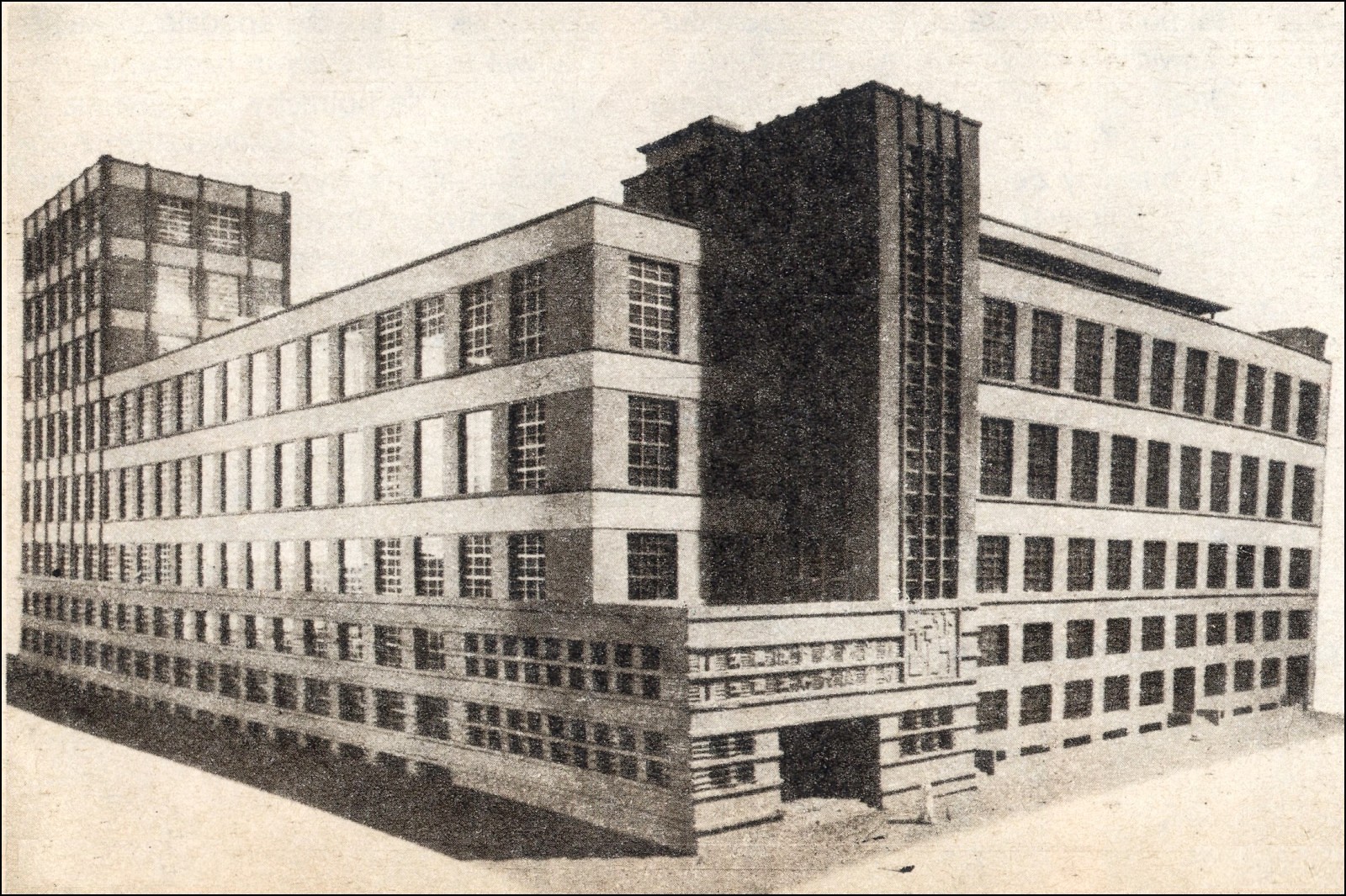
The project implemented was created by the highly regarded architect Julian Puterman-Sadłowski. The building was constructed on the site of the former Swietokrzyski manor. The construction was managed by Karol Bauch and Piotr Tomaszewski, and the designer was Stefan Bryła, the creator of the Prudential structure. The result of six years of work was the erection of a four-storey building with higher accents on an L-shaped plan, with its base on Nowogrodzka Street. On the St Barbara Street side, Julian Puterman designed a block of flats for the employees and an office tower, which was the most expressive element of the composition.
A fragment of the main entrance to the Telecommunications Office in 1934 and 2024. Source: NAC – National Digital Archives, Ref: 1-G-5376 and whiteMAD/Mateusz Markowski
The main entrance for clients was located in the corner from Poznanska and Nowogrodzka Streets. Four main staircases were designed for customer service. The most representative character was given to the staircase from the side of the main entrance. In addition to the Telecommunications Office, the building also housed: Teletechnical School, Museum of Post and Telecommunications and offices of the Technical Department of the Ministry of Posts and Telegraphs. Rest rooms and a canteen for the staff were placed on the top floor. Vertical communication was provided by five passenger lifts.
The Telecommunications Office building in 1934 and 2024. Source: Warsaw University of Technology Main Library, Licence: Public Domain and whiteMAD/Mateusz Markowski
The functionalist edifice received richly finished interiors, in the creation of which durable and aesthetically pleasing materials were used. The most representative character was that of the ground floor, intended mainly for the public. Above the spacious halls there were mezzanine floors for employees. The character of the interiors was emphasised by the polished steel balustrades of the stairs, the openwork mezzanines and the stone cladding of the walls and stone floors. The lower parts of the building’s façade were clad in red sandstone, while the upper parts were clad in noble Terazzite plaster. The whole decoration was complemented by a decorative inscription in two lines made in metal: MIĘDZYMIASTOWY TELEPHON / RADIOTELEGRAF TELEPHON, and a rectangular panel with a stylised eagle in the spirit of Polish art déco. Its author was the sculptor Jan Goliński. The silver-plated crown was removed during the communist years and returned to its place in the 1990s.
View of the southern part of the edifice and the residential house of the office workers in the 1930s and today. Source: “Warszawski modernizm” and whiteMAD/Mateusz Markowski
After damage in the 1939 defensive war, the building was quickly rebuilt and modernised. During the occupation, the building was occupied by the Germans, who placed the Deutsche Post Osten, or Telephone Office, there. It escaped serious damage afterwards, but its façade still bears traces of bullets and shrapnel. The interiors, on the other hand, escaped the turmoil of war for the most part, but in the post-1945 modernisation work they were subjected to changes that obliterated their former elegant character. In the post-war years, the building was one of the most modern buildings in the capital.
Between 1959 and 1962, a new wing was added along Nowogrodzka Street. Unfortunately, this did not work out well for the whole establishment. Further negative changes to the building’s appearance occurred in the 1980s, when a new high-rise building was erected on the edge of the inner courtyard, overwhelming the whole.
Although this outstanding work of Polish Modernism was irreversibly deformed, it still stands out from the surrounding buildings and remains one of the most characteristic and successful realisations of the interwar period.
The Telecommunications Office building around 1950 and today. Source: Warsaw, Cooperative Publishing Institute “Kraj”, Warsaw 1950, p. 51 and whiteMAD/Mateusz Markowski
Source: varsavianista.pl
Read also: Office building | Warsaw | Architecture in Poland | Interesting facts | whiteMAD on Instagram


